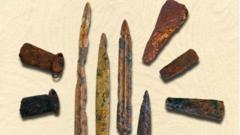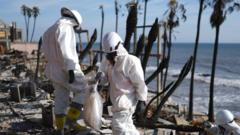As India plans a major development project on Great Nicobar Island, local anthropologist Anice Justin voices concerns about the potential loss of indigenous cultures and environmental destruction, particularly affecting vulnerable communities like the Shompen tribe.
Concerns Mount Over India's Ambitious Development Project on Great Nicobar Island

Concerns Mount Over India's Ambitious Development Project on Great Nicobar Island
A proposed multi-billion dollar 'Hong Kong-like' development in India raises fears of ecological and cultural devastation among local tribes.
India’s Shipping Ministry has triggered an outcry regarding its proposed multi-billion dollar project on Great Nicobar Island, which critics fear could spell disaster for both the local ecology and indigenous cultures. “The forest is our supermarket,” shares Anice Justin, an anthropologist who grew up in the Andaman and Nicobar Islands. This federally-administered territory comprises 836 islands, with only 38 inhabited, presenting a backdrop that is now teetering on the edge of radical change.
With an ambitious budget of 720 billion rupees ($9 billion), this development plan aims to create a transshipment harbor, power plant, airport, and new township covering 166 square kilometers, in an effort to transform the island into an international trade hub. While the government anticipates that these developments will attract approximately 650,000 residents over the project's 30-year timeline, local communities, particularly the vulnerable Shompen tribe, express grave concerns about the impending loss of their traditional way of life and habitat.
Home to some of the world's most isolated tribes, the Nicobar Islands are at risk, with groups like the Jarawas and North Sentinelese remaining largely uncontacted. The Shompen, a nomadic tribe, primarily live deep in the island's rainforests, relying on foraging to sustain their existence. Justin warns, “Development as viewed from the outside is irrelevant to their traditional lifestyle."
Environmentalists have also raised alarms regarding the project's potential ecological impact. Currently, 80% of Great Nicobar is enveloped in rainforest, housing over 1,800 species of animals and 800 types of flora, many of which are unique to the region. While the federal environment ministry has claimed only 130 square kilometers will be cleared for development, that still represents a loss of nearly one million trees—an estimate many experts believe is too conservative.
Despite assurances from Environment Minister Bhupendra Yadav that the project will not displace tribes, skepticism remains. In a letter earlier this year, 39 international specialists warned that this development could serve as a “death sentence” for the Shompen, threatening to obliterate their habitat. Justin echoes these sentiments, fearing they lack the resources to adapt to an industrialized environment.
Moreover, the initiative may expose the Shompen to diseases from outside contact. Historically, uncontacted populations have typical experiences of devastating health crises upon interaction, resulting in severe population declines.
Broader ecological ramifications loom as well, especially regarding the impact on the Galathea Bay, a vital nesting ground for giant leatherback turtles and other marine wildlife. Although government statements claim that these natural habitats will remain unaffected, ecologists like Dr. Manish Chandi warn there are numerous other species that may suffer from the disruption.
As the 30-year project looms on the horizon, the local communities are increasingly worried about the irreversible changes it could bring to both their rich environmental context and their ancestral ways of life, heightening the demand for a reconsideration of such ambitious undertakings.


















